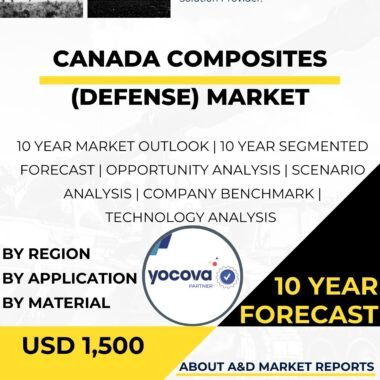Description
The defense armor material market in Sweden is a critical and evolving segment of the country’s defense industry, playing a vital role in enhancing the protection and survivability of military personnel and platforms. As a nation with a strong commitment to technological innovation and military modernization, Sweden actively invests in indigenous armor material technology to ensure self-reliance, improve defense capabilities, and address emerging security threats.
Armor materials are advanced materials specifically designed to provide protection against ballistic threats, such as bullets and shrapnel, as well as blast and impact forces. These materials are used in various defense applications, including body armor for soldiers, armored vehicles, and protective structures for military installations. The defense armor material market in Sweden encompasses a diverse range of materials, each offering unique properties and capabilities to address specific defense requirements.
Sweden’s investment in indigenous defense armor material technology underscores the country’s commitment to maintaining technological superiority and fostering innovation. By developing and integrating advanced armor materials domestically, Sweden reduces its reliance on foreign suppliers and ensures a constant and reliable supply of critical components for its defense forces. Moreover, indigenous armor material development fosters technological advancements and stimulates the domestic defense industry, contributing to the country’s technological growth and economic development.
The defense armor material market in Sweden plays a vital role in enhancing the safety and survivability of military personnel. Advanced body armor, made from cutting-edge materials such as aramid fibers and ceramic composites, offers lightweight yet robust protection for soldiers in the field. These materials provide a high level of ballistic resistance while ensuring comfort and mobility for the wearer.
Moreover, armor materials used in armored vehicles play a crucial role in protecting personnel and critical equipment during combat operations. The integration of advanced armor plating, reactive armor, and spall liners enhances the survivability of military vehicles, reducing the risk of casualties and mission failure.
The defense armor material market also supports the protection of military installations and sensitive infrastructure. Reinforced structures and protective barriers, made from specialized armor materials, safeguard strategic assets from potential threats, including explosive devices and ballistic attacks.
Saab Group, a renowned defense contractor in Sweden, is a key player in the country’s defense armor material market. With expertise in advanced materials and engineering, Saab has been at the forefront of developing cutting-edge armor solutions for defense applications. Saab’s flagship projects, such as the development of armored vehicles and body armor, contribute significantly to Sweden’s defense modernization efforts and its military’s operational effectiveness.
As the defense armor material market continues to evolve, Sweden’s defense industry remains committed to advancing its armor material technology. Research and development efforts focus on improving the performance and properties of armor materials, exploring new materials and manufacturing techniques, and optimizing the integration of armor solutions into various defense platforms.
Furthermore, Sweden’s commitment to international cooperation and partnership drives the responsible export of defense armor material technology. Sweden adheres to strict export control regulations to ensure that armor materials are provided to responsible partners seeking to enhance their own defense capabilities and contribute to global security and stability.
Despite its strengths, the defense armor material market in Sweden faces challenges that warrant careful consideration. One primary consideration is the need to balance protection and weight in armor design. While advanced armor materials offer excellent protection, their weight can impact mobility and vehicle performance. Engineers must find the right balance between protection and weight to ensure optimal operational capabilities.
Moreover, armor material development must keep pace with evolving threats and technologies. As ballistic and explosive threats become more sophisticated, armor materials must adapt to provide adequate protection against emerging dangers.
In conclusion, the defense armor material market in Sweden is a crucial component of the country’s defense capabilities, providing advanced technology to enhance the protection and survivability of military personnel and platforms. Sweden’s investment in indigenous defense armor material technology and its collaboration with companies like Saab Group demonstrate the nation’s commitment to technological self-reliance and innovation. The adoption of cutting-edge armor materials enhances the safety and effectiveness of the Swedish Armed Forces, contributing to national security and supporting international peacekeeping and security efforts. By addressing challenges proactively and investing in research and development, Sweden is well-positioned to maintain a leading edge in the global defense armor material market, supporting its defense needs and contributing to the advancement of armor technology worldwide.




